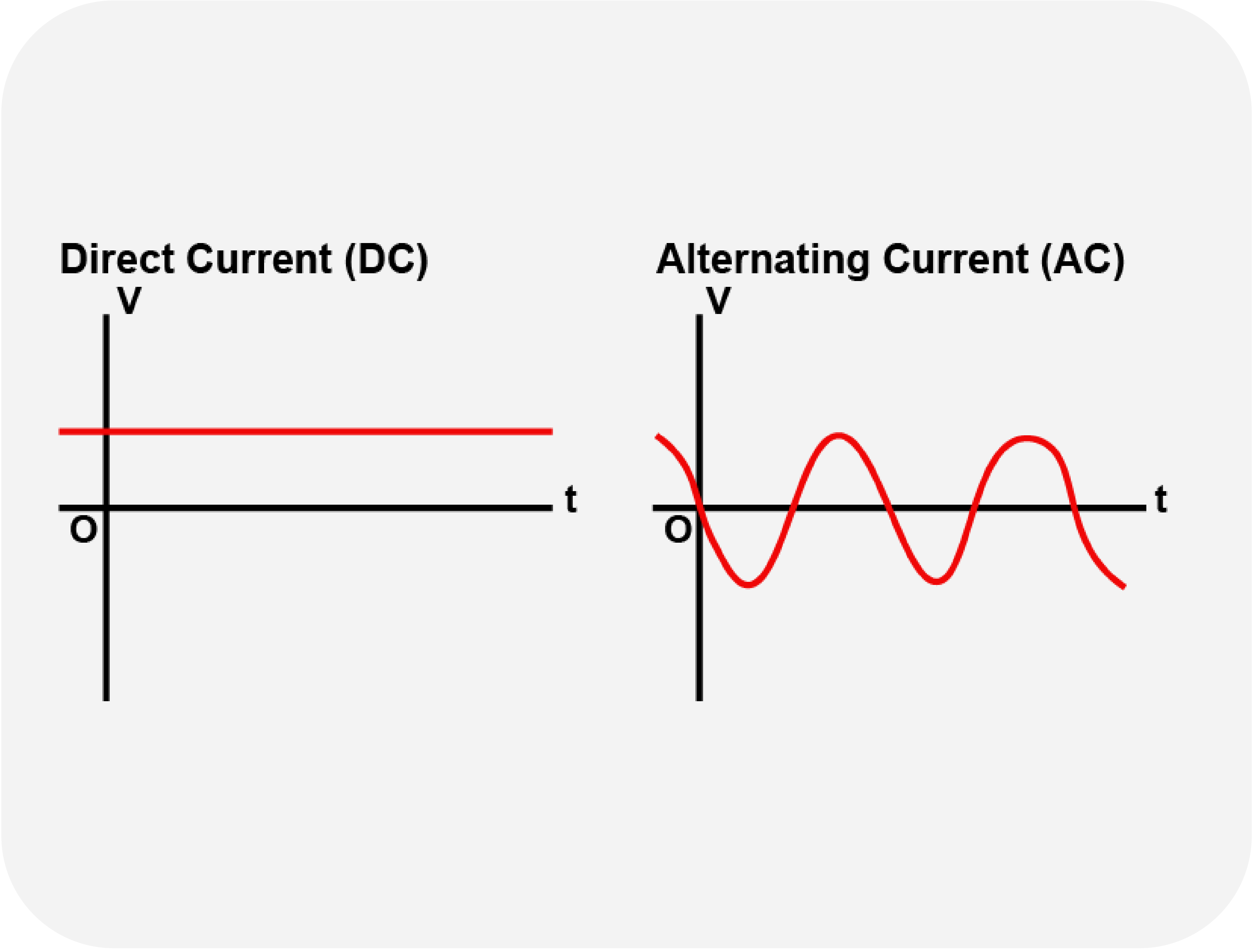Why AC Voltage and Current Are Easier to Quench Than DC?

In designing protection systems, engineers often hear that AC arcs are easier to interrupt than DC arcs. This principle has major implications in fuse sizing, the selection of circuit breakers, and overall system safety. In this article, we’ll explain why AC is easier to extinguish and what that means for fuse and circuit designs. We’ll also discuss how OptiFuse products address quenching challenges and provide guidance on selecting the right AC fuse vs DC fuse for your application.
What Quenching an Arc Means
When a fuse or circuit breaker opens under fault conditions, an electrical arc is formed between the separating contacts. The arc conducts current across an air gap and must be extinguished (quenched) to stop current flow and isolate the fault.
Quenching depends on:
1. The voltage waveform (its zero crossings)
2. The ability of the arc path to become non-conductive (by cooling, elongation, increasing voltage stress)
3. System inductance, capacitance, and stray energy
Because of these factors, AC and DC behave very differently in arc extinction.
Comparing Arc Quenching in AC vs DC Systems
AC arcs are easier to quench due to zero crossings, cooling opportunities, and polarity reversal, while DC arcs require specialized design considerations. Choosing the right fuse or breaker, ensures safe and reliable protection for both AC and DC systems.
1. Natural Zero Crossings
- Alternating current (AC) naturally alternates up and down, rising to a peak voltage and then reversing to a negative peak. Each time the voltage changes direction, it passes through 0 volts (120 times per second in U.S. 60 Hz systems). At each zero crossing, the arc momentarily loses its sustaining current, giving it a natural chance to extinguish.
- Direct current (DC) behaves differently: the voltage is constant and never passes through zero, so the arc can continue indefinitely unless external measures disrupt it.
2. Arc Cooling and Lengthening
- Each zero crossing in AC provides time for the arc to cool and the air gap to de-ionize. Once the ionized path collapses, re-ignition is less likely, especially as the contact gap widens.
- With DC, the current is continuous, keeping the plasma energized and making the arc much harder to extinguish.
3. Voltage Polarity Reversal
- In AC, the voltage polarity flips every half cycle, which further disrupts residual ionization in the arc path. This reversal helps prevent the arc from re-establishing.
- In DC, the polarity never changes, so this “reset effect” is absent.
Design Implications for Fuses and Circuit Breakers
Because AC is easier to quench, protective devices must be designed differently for AC vs. DC:
- Fuse time-current curves: DC-rated fuses must handle a sustained arc and therefore often require longer arc paths, more ceramic filler, or advanced interruption features.
- Voltage ratings: A fuse or circuit breaker rated for 250 V AC may not be safe at 250 V DC. DC interruption requires more robust construction and often has lower DC ratings than AC.
- De-rating strategies: DC systems typically need more conservative derating of protection devices to ensure safe operation.
How OptiFuse Ensures Reliable AC and DC Arc Protection
At OptiFuse, we design and source fuses and circuit protection devices with ratings suited for their intended environments: AC, DC, or hybrid systems.
- For DC interruption (battery systems, solar, energy storage), select fuses explicitly rated for DC and sized to your available fault current: Class T (F6T 300 VDC / F3T 160 VDC) for higher-voltage/high-AIC feeders, ANE-M 80 VDC where ignition protection is required, and MIDA/ANE for 58 VDC / 32 VDC vehicle and auxiliary battery circuits.
- For AC applications, designers can choose from a broader range of devices that benefit from natural zero crossings, simplifying arc quenching and reducing component stress.
In applications where DC protection is required (battery systems, solar, EVs), the choice of fuse construction becomes critical. While a simple fuse link is often fine in AC systems, in DC you need engineered arc suppression.
By understanding why AC arcs are easier to extinguish than DC arcs, engineers can select the right fuse and circuit breaker for AC vs DC applications ensuring both performance and safety in their systems. OptiFuse offers products designed for both AC and DC arc interruption, ensuring reliable protection and system safety. See our full Fuse Selection Guide for complete context.
Sebastian Castañeda, Application Engineer at OptiFuse, supports customers with technical solutions, custom circuit protection design, and training. He provides tailored guidance and shares expert insights on the OptiFuse Blog.